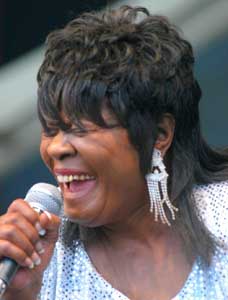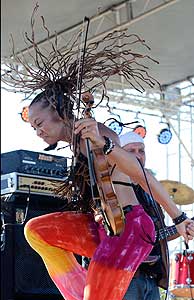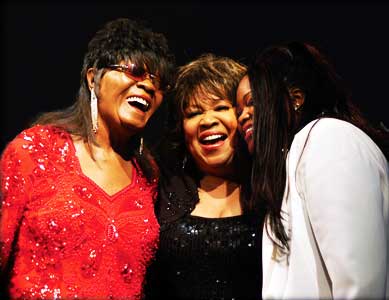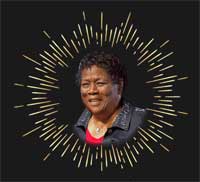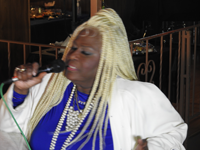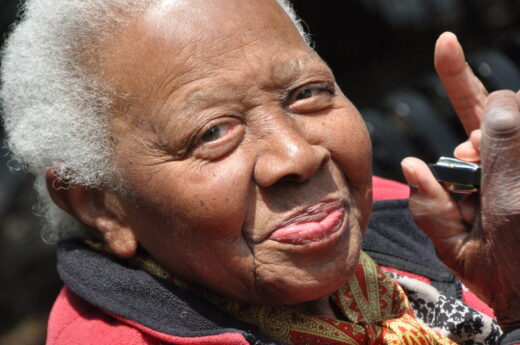Carol Boss
 Carol Boss, born and raised in a small town in south-central Missouri, has been a St. Louis resident since 1995. Before fulfilling her dream of becoming a full time visual artist in the fall of 2016, Carol was a successful digital illustrator and photography retoucher, as well as manager of Big George Brock. The decision to become a full time visual artist was made after upon meeting Sharon McConell-Dickerson along with a series of events that made her feel like she was being led to paint full time.
Carol Boss, born and raised in a small town in south-central Missouri, has been a St. Louis resident since 1995. Before fulfilling her dream of becoming a full time visual artist in the fall of 2016, Carol was a successful digital illustrator and photography retoucher, as well as manager of Big George Brock. The decision to become a full time visual artist was made after upon meeting Sharon McConell-Dickerson along with a series of events that made her feel like she was being led to paint full time.
Most of Carol’s time is spent with her family, making art and seeing music. She is known for several larger painting projects such as the musician wall mural at HWY 61 Roadhouse and Kitchen in Webster Groves as well as Big George Brock’s Blues Bus. Carol has always had a profound passion for painting and music, and she often combines the two. Influenced by Toulouse-Lautrec and Van Gogh’s vibrant use of color and harsh brush strokes, Carol’s painting style is typically realistic in shape with bright accents of color. Her paintings often tell a story. Her most recent works focus on hope and the blues. When asked about her art she simply says, “I’m a painter.”
SHARON McCONNELL-DICKERSON

Sharon McConnell-Dickerson is an artist, lecturer, teacher, and speaker. Her work is featured in numerous exhibitions and included in museum, university, and private art collections.
Originally from New England, she worked as a flight attendant and chef on corporate jets. In addition to heads of major corporations, she flew with such notables as George and Barbara Bush, Donald and Ivana Trump, Al Haig, Henry Kissinger, and others.
After working in the corporate world for seven years, a turn in her life took place at the age of twenty-seven. She woke up in Chicago blind. She was eventually diagnosed with Uveitis, a degenerative eye disease. After several years of surgeries and treatments she became involved with sculpture. “Sculpture is the vehicle by which I access a lost sense,” she says.
She moved to Santa Fe, New Mexico in 1996 to study all aspects of art. Taking a traditional approach, she learned from teachers and mentors including Arlene Siegel, Robert Refvem, Sam Scott, Dean Ericson, Ulrich Franzen, and Agnes Martin. She also went to Paris, France. There with the assistance of the curators and education directors of the museums and galleries did intense hands on sculpture and art studies in premier galleries and museums. After only ten months of study, she had produced a body of work consisting of eight bronze sculptures. Her earliest influence was Native American Blind Sculptor Michael Naranjo who showed her what was possible and rewarded her with her first solo exhibition at the Moxley, Ross, Naranjo Gallery. Her first life-sized work is reminiscent of French figurative sculptor Maillol. Her life-cast work is in the same tradition and methods of master life caster George Segal.
It is for her life-masks of legendary blues musicians that McConnell-Dickerson is best known. “I wanted to discover the faces behind the music I love, so I went to Mississippi to map out the visages of the real Delta Blues men and women.” Her project took root and found a strong direction of its own, leading her to create masks of fifty-two musicians. This body of work has been exhibited in the New Mexico State Capitol Rotunda, the Albuquerque Museum, Willie Dixon’s Blues Heaven Foundation in Chicago, Blind Faith Gallery in Clarksdale, Mississippi, The Blues Music Awards in Memphis; the National Civil Rights Museum in Memphis; the Mississippi Arts Center in Jackson, Mississippi; the Tunica Museum in Tunica, Mississippi; Blues Passions Festival in Cognac, France, and at the Galerie le Clos d’Epicure in Cahors, France. It is currently touring with Exhibits USA-Mid-America Arts Alliance. Another edition of 40 masks are also touring the U.S. She donated the original life-casts to the Delta State University Archives.
For this work, she is a recipient of the Blues Foundation’s Keeping the Blues Alive Award for 2016
Collaborative Artwork
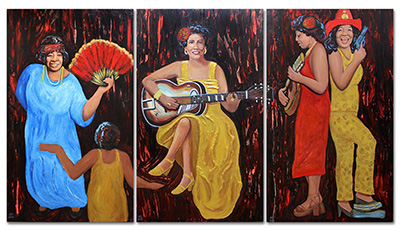
Ma Rainey and Bessie Smith
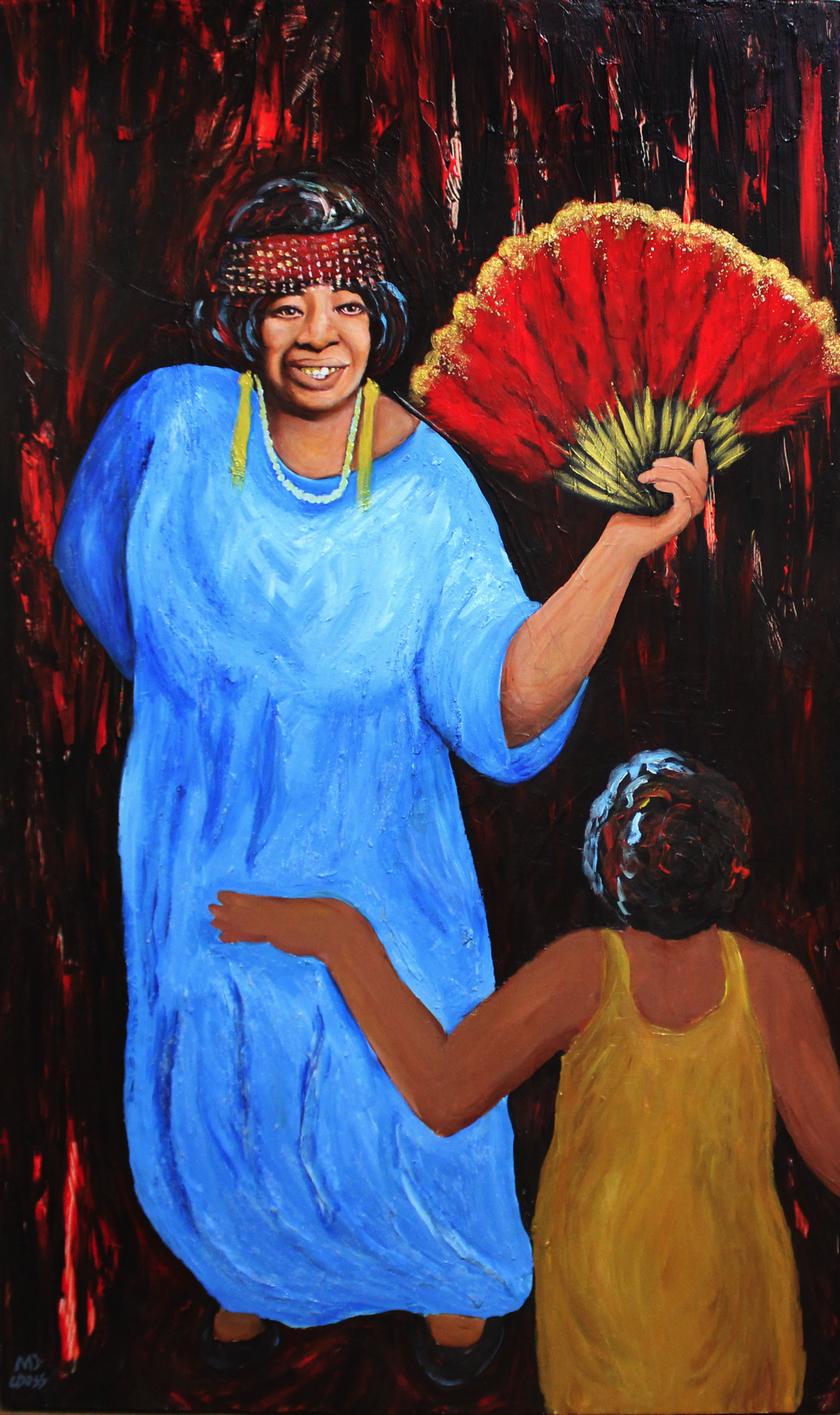
Ma Rainey
Ma Rainey was born named Gertrud Pridgett in either 1882 or 1886 in either Russell County, Alabama or Columbus, Georgia. Ma started performing as a teenager and acquired her stage name after marrying Will Rainey in 1904. Together, Ma and Will toured with the Rabbit Foot Minstrels troupe and then in 1914 they broke away to form their own traveling show billed as Rainey and Rainey, Assassinators of the Blues. Ma became very popular during this time. She also met the younger Bessie Smith at this point in her career.
Ma started recording with Paramount in 1923. Among her 100 or so recordings over the next 5 years where “Bad Luck Blues”, “Bo-Weevil Blues” and “Moonshine Blues”. Ma was marketed by Paramount as the “Mother of the Blues”.
In 1924, Ma recorded with Louis Armstrong and soon started touring with the Theater Owners Booking Association (TOBA) led by bandleader Thomas Dorsey. The two recorded about 20 songs together in 1928. Paramount shortly dumped her contract.
Ma toured and recorded with the Georgia Jazz Band until 1935 when she returned to Columbus, GA to run several theaters until she died of a heart attack in 1939 at age 53.
Ma was inducted into the Blues Foundation’s Hall of Fame in 1983 and the Rock and Roll Hall of Fame in 1990. Her song “See See Rider Blues” was inducted into the Grammy Hall of Fame. Columbus, GA now has a festival in her name.
Bessie Smith
Bessie Smith was born sometime in 1892 in Chattanooga, TN. Her father died when she was a toddler and was totally orphaned by 9 years old. Her older sister Viola took care of Bessie and her other siblings at that point. During her childhood, Bessie sang and danced in Chattanooga along with guitar accompaniment provided by her brother Andrew in front of the White Elephant Saloon to help make ends meet.
At 20, Bessie was hired to dance in a traveling troupe to join her oldest brother Clarence. Ma Rainey was singing with the troupe at that time.
Smith’s first recordings started in 1923 with Columbia Records while she was living in Philadelphia. Her first record as a success. She soon became a headliner for the black owned traveling troupe called the Theater Owners Booking Association (TOBA) circuit. She and the troupe traveled extensively in the south and east coast. During this time of her first recordings, she met and married Jack Gee. Infidelity on both sides led to an ending of the relationship 6 years later.
While Smith was touring with the TOBA circuit, she became the highest paid black entertainer at the time and soon garnered the nickname “Empress of the Blues”. She made 160 recordings for Columbia and had the luxury of being backed up with the best musicians of the day, including the likes of Louis Armstrong, Fletcher Henderson and Coleman Hawkins.
The Great Depression slowed down Bessie’s career but gave her a chance to be in a Broadway musical “Pansy”, which was not a success, and also in the movie “St. Louis Blues”.
Bessie started to make a comeback in the early 1930 during the Swing era, but her life was cut way too short by injuries suffered from a brutal traffic accident on hwy 61 between Memphis and Clarksdale, MS in 1937. She died the next day at the G.T. Thomas Afro-American Hospital (now the Riverside Hotel) in Clarksdale. She was 43 years old.
Bessie’s grave was unmarked until 1970 when Janis Joplin and Juanita Green (a friend who did housework for Bessie) stepped up to pay for her tombstone.
Bessie has been inducted into at least 5 hall of fames and lifetime achievement awards including the Rock and Roll Hall of Fame, the Blues Hall of Fame and the Grammy Lifetime Achievement Award. One of her songs, “Downhearted Blues” is in the National Recording Registry at the Library of Congress since 2002 and is listed in the Songs of the Century by the Recording Industry of America and the National Endowment of the arts in 2001. Bessie has 2 other songs in the Grammy Hall of Fame – “St. Louis Blues” and “Empty Bed Blues”.
Memphis Minnie
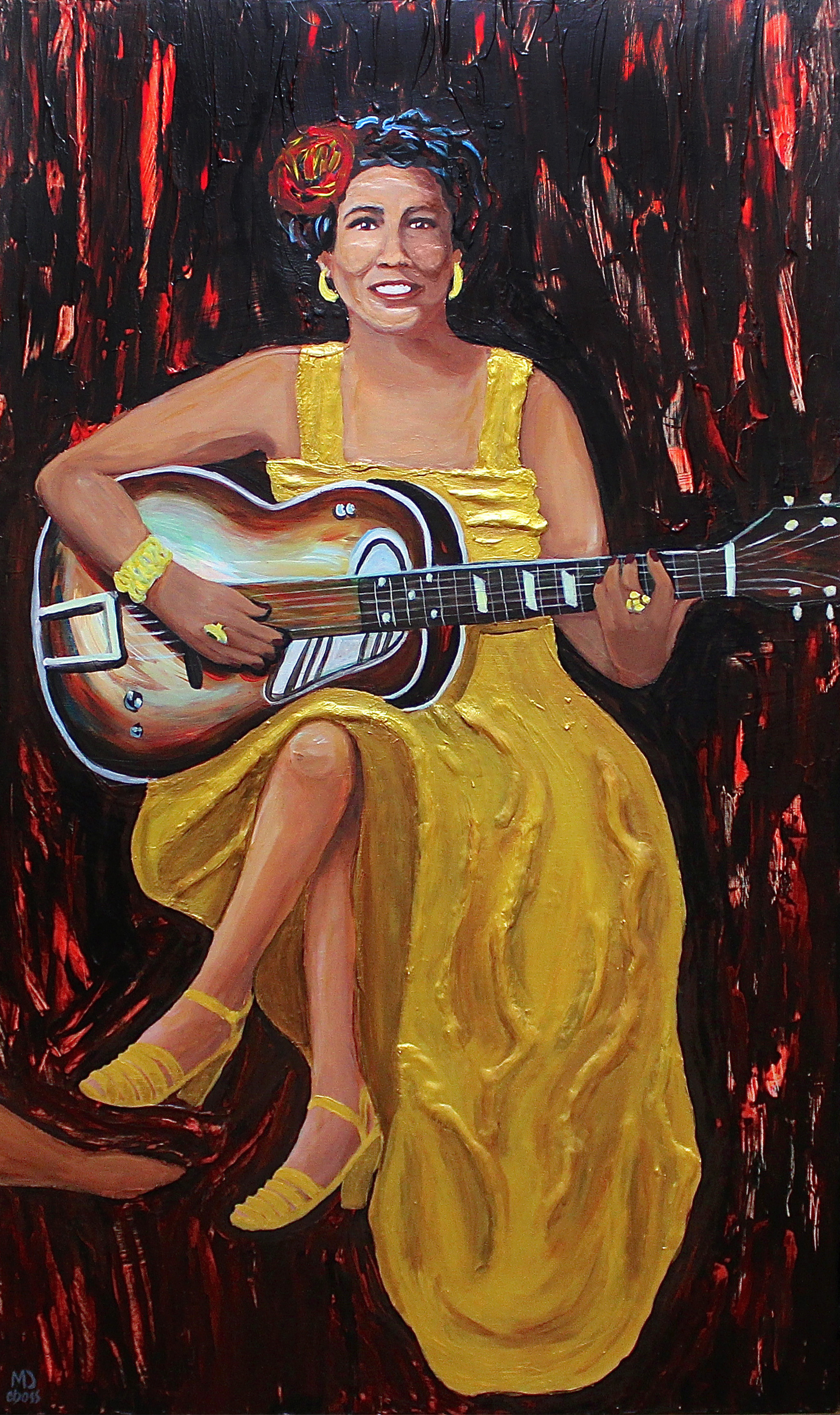
Memphis Minnie was born Lizzie Douglas in Algiers, LA in 1987. At 13, Lizzie, then known at Kid Douglas , ran away from her home and began to play guitar and sing in the streets of Memphis. Her performances led to a four year stint in the Ringling Brothers Circus. She eventually returned to Memphis and in 1929 married Joe McCoy and began to play together. They were discovered by Columbia Records and soon recorded in New York City under the names Kansas Joe and Memphis Minnie. Eventually they recorded under the Vocation label. The song “Bumble Bee” became Minnie’s most popular songs.
Kansas Joe and Memphis Minnie recorded music together through 1934 and divorced a year later. Minnie moved to Chicago and kept busy recording for Decca Records as well as Bluebird Records and toured heavily in the South.
Minnie married Ernest Lawlars (Little Son Joe) in 1938 and recorded together through the 1940s. Minnie continued to play through the 1950s until her health declined. Her husband died in 1961 and she in 1973. Bonnie Raitt paid for her headstone.
Several of her songs were covered by later musical groups including her and Kansas Joe’s song “When the Levee Breaks” by Led Zeppelin, “I’m Sailin’” by Mazzy Star and “Me and My Chauffeur Blues” by Jefferson Airplane.
Jessie Mae Hemphill
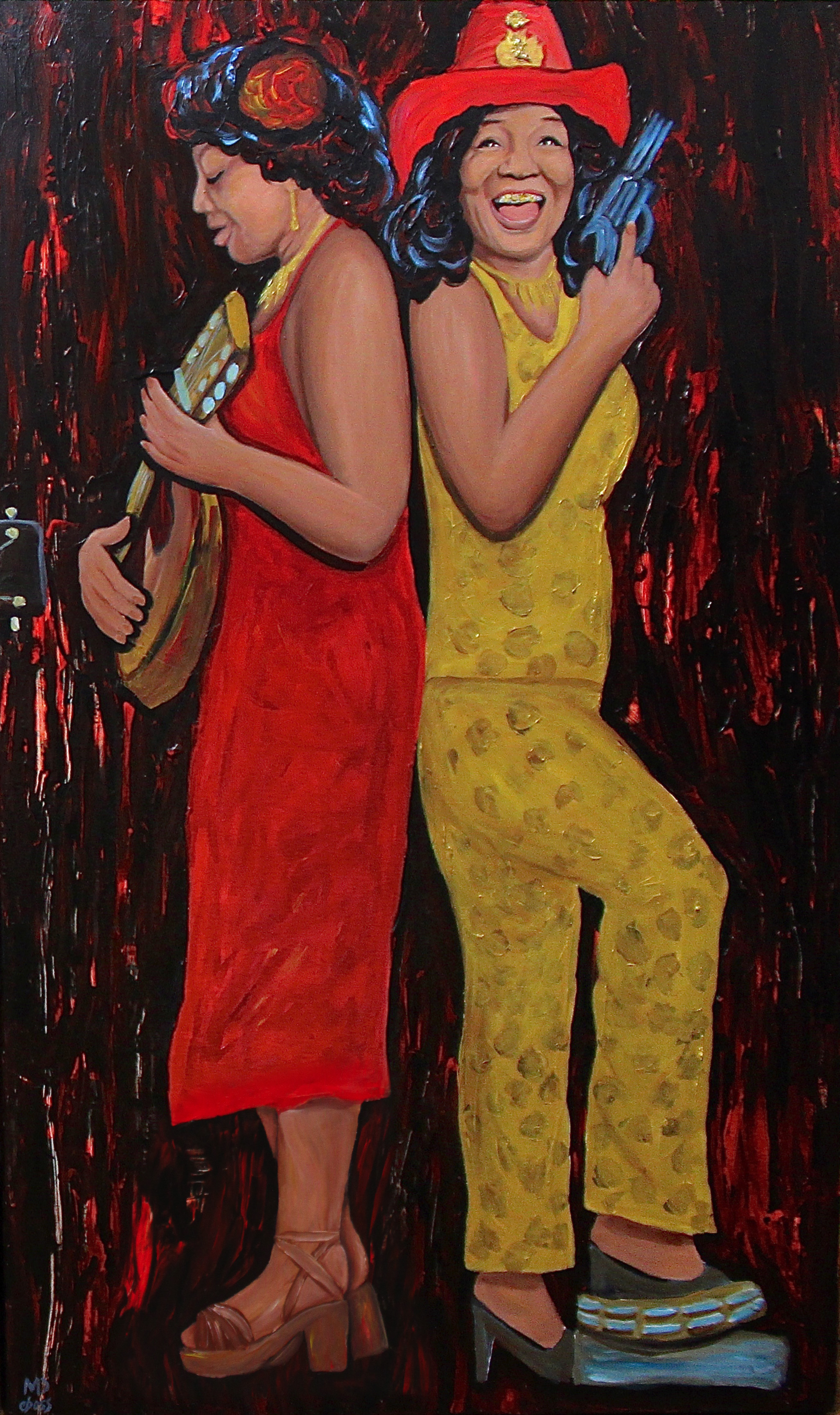 An independent, feisty woman, Jessie Mae Hemphill established her career in the world of country blues at a time when the field was dominated by men. Decked out in her signature cowboy hat and colorful outfits, she performed a rhythmic style of North Mississippi Hill Country blues. Her great -grandfather Dock Hemphill, a former slave, played the fiddle. Her grandfather Sid Hemphill, a multi -instrumentalist, led a local fife and drum band. At the urging of her grandfather, Hemphill picked up the guitar, harmonica, and drums. As a child, she performed with her grandfather’s fife and drum band at picnics and other social functions. Her early work as a drummer, inspired her percussive style of blues guitar. During the mid 1950s, Hemphill moved to Memphis, where she worked odd jobs during the day. At night, she sang the blues in clubs on Beale Street or played for tips on the street’s bustling sidewalk. While in Memphis, she met Muddy Waters, B.B. King, and Howlin’ Wolf, who greatly influenced her style. George Mitchell and Dr. David Evans made field recordings of Hemphill. In 1981, she made her first commercially released recording She Wolf. The next year, Vogue Records, a European label reissued She Wolf, introducing her to blues fans internationally. During the 1980s, she toured widely across Europe, Canada, and the United States. Her 1990 recording Feelin’ Good won a W.C. Handy Award for best acoustic blues album.
An independent, feisty woman, Jessie Mae Hemphill established her career in the world of country blues at a time when the field was dominated by men. Decked out in her signature cowboy hat and colorful outfits, she performed a rhythmic style of North Mississippi Hill Country blues. Her great -grandfather Dock Hemphill, a former slave, played the fiddle. Her grandfather Sid Hemphill, a multi -instrumentalist, led a local fife and drum band. At the urging of her grandfather, Hemphill picked up the guitar, harmonica, and drums. As a child, she performed with her grandfather’s fife and drum band at picnics and other social functions. Her early work as a drummer, inspired her percussive style of blues guitar. During the mid 1950s, Hemphill moved to Memphis, where she worked odd jobs during the day. At night, she sang the blues in clubs on Beale Street or played for tips on the street’s bustling sidewalk. While in Memphis, she met Muddy Waters, B.B. King, and Howlin’ Wolf, who greatly influenced her style. George Mitchell and Dr. David Evans made field recordings of Hemphill. In 1981, she made her first commercially released recording She Wolf. The next year, Vogue Records, a European label reissued She Wolf, introducing her to blues fans internationally. During the 1980s, she toured widely across Europe, Canada, and the United States. Her 1990 recording Feelin’ Good won a W.C. Handy Award for best acoustic blues album.
